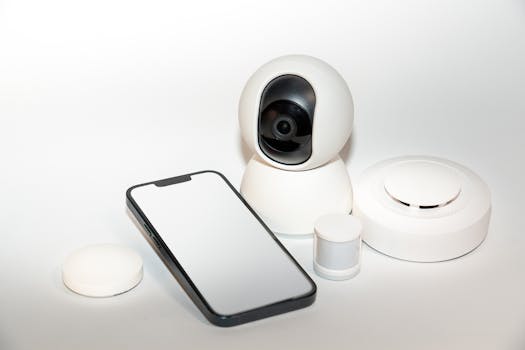Mobile Games and Esports
Mobile Gaming Accessories Demystified: Headsets, Triggers, and Cooling Fans
Explore essential mobile gaming accessories such as headsets, triggers, and cooling fans. Learn what to choose, why it matters, and how to set up for peak gaming.
Anúncios
Gripping a phone for an intense gaming session feels a bit like prepping for a mini marathon—wrist tense, eyes alert, thumb ready for action. Behind the scenes, mobile gaming accessories play the support role, quietly boosting every move. From tactile triggers to immersive headsets, the market keeps evolving for good reason.
Every player who’s tapped their screen in a heated contest knows the moment when sweaty palms or laggy sound can ruin a perfect streak. There’s no shame in seeking a little edge. Accessories exist to make gameplay smoother, easier, and much more fun, especially as competition ramps up.
This article breaks down mobile gaming accessories for real-world users. Whether you want sharper sound, precise control, or reliable cooling, you’ll find actionable ideas and relatable scenarios below. Let’s dig in and upgrade your next match together.
Choosing Headsets that Fit Both Play Style and Environment
Finding a mobile gaming headset isn’t about picking the flashiest option. The right choice upgrades your listening and communication instantly, setting you up for clear victories. Let’s break down common needs and what matters most.
Before buying, pinpoint when and where you play. “I mostly game on my commute” leads you to noise-canceling or compact wireless models. “My home is quiet and I talk with my squad” points toward comfy, wired headsets with crisp mics for marathon sessions. The details improve your decision.
Sound Quality Makes or Breaks the Experience
Rachael texts, “I missed that enemy because I couldn’t hear footsteps.” Tinny audio kills immersion. Instead, look for headsets with surround sound or enhanced stereo features. The difference is instantly audible—footsteps sound like they’re behind you, not everywhere at once.
The best headsets reveal subtle game cues. For example, bass-heavy profiles spotlight explosions, but balanced versions highlight both music and effects. Use an in-game audio test before settling. A brief setting adjustment may sharpen everything you hear.
Clarity also matters in team play. “Mics that cancel background noise let me focus,” says Paul, a regular in squad shooters. If you’re coaching a team or calling out foe locations, prioritize mic design and user reviews.
Comfort Isn’t Optional for Long Sessions
Imagine your headset as the pillow for your gaming brain—firm, but not distracting. Gel ear cups, lightweight bands, and breathable fabrics prevent sweaty ears and headaches after hours of play. Count on solid build materials for lasting comfort.
Adjustable headbands make sharing easier. “My brother can borrow my headset without messing up the fit,” Megan explains. For shared households or growing teens, flexible sizing counts. If you wear glasses, try models with cutouts for frames.
A good fit is like well-worn sneakers—no pressure, no fatigue. If your ears ache after twenty minutes, return or swap. True comfort builds confidence and helps you forget the hardware during tense showdowns.
| Headset | Wired/Wireless | Best Feature | Takeaway |
|---|---|---|---|
| Over-Ear Pro | Wired | Clear surround sound | Use for immersive home play and strategy calls. |
| Sport Lite Buds | Wireless | Sweat-resistant, compact | Great for commutes or lightweight casual sessions. |
| Gamer On-Ears | Wired | Noise-canceling mic | Pick when you play with talkative teammates. |
| Chill Cloud Set | Wireless | Memory foam comfort | Choose for marathon sessions at home or on vacation. |
| Budget Basic | Wired | Simple controls | Best if you want affordable, no-frills performance. |
Adding Physical Triggers for Faster Reflexes
Truly responsive gameplay on a touch screen can feel slippery, but mobile gaming accessories like triggers add crisp precision. These tools put the “snap” back in every tap, helping you act faster in real matches.
Physical triggers snap or clamp onto your phone, providing a tactile edge. There’s no guesswork—just the clear ‘click’ of each shot or jump, turning your phone into a mini-controller. This change matters most when fractions of a second separate winners from runners-up.
Comparing Trigger Types
Not all triggers look or feel alike. Some prioritize travel distance—the length from tap to registered shot. Shorter means faster. Others provide mechanical feedback, which trains your real-life muscle memory after lots of practice sessions.
- Look for triggers that sit securely without blocking the screen, so nothing interrupts your field of vision. Installation should be simple: just snap and play without tools or sticky residue.
- Adjust the spacing so both thumbs rest comfortably. Some designs have movable arms that let you fine-tune for your personal grip or finger size.
- If you switch games between styles—shooter one day, racer the next—choose multi-mode triggers with adjustable sensitivity. They’ll adapt to different game mechanics or control layouts.
- Choose a set with low-profile design so you can slip your phone into your pocket when you’re done, with no removal needed.
- For lasting use, avoid brittle plastics and look for reviews mentioning durability. Lightweight metal or reinforced ABS lasts through thousands of rounds and reduces the chances of mid-match failure.
Installation usually takes seconds. Most users find “snap-on and play” models far less frustrating than adhesive styles, which may leave marks when removed. Practice the trigger motion before your next ranked match so you’re ready from the opening second.
Training with Triggers: Micro Habits for Real Improvement
Use triggers with daily drills. Quick simulations—like aiming down sights, then tapping twice—build rhythm and speed. Zach says, “I run warm-up routines between matches, so my pulse and fingers sync up fast.”
Visualize a scenario: you wait behind cover, breathing slow and steady. As soon as an enemy appears, both fingers move in sequence, trigger clicks preceding any mouse or keyboard rival. This routine makes real-world nerves fade.
- Start each session with ten practice taps on the trigger to build consistency before jumping into live matches.
- Pair reflex training apps with trigger use for faster muscle memory development—try focused 60-second drills before competing with friends.
- If fatigue sets in after long sessions, switch to lighter trigger models or adjust hand placement every fifteen minutes for sustained performance.
- Use replay mode after matches to watch your trigger timing. Note hesitations or missed taps, then focus practice in those areas next time.
- Govern touch sensitivity in your phone’s settings to fine-tune response and make each trigger feel natural for your unique play style.
Seasoned mobile gamers know that refining your routine with proper tools makes a visible difference. “Now I react as the game needs—no more blaming slow thumbs,” Chris texts after a ranked push. Skill plus accessory equals results.
Cooling Fans Protect Your Phone and Performance
Long gaming sessions heat up mobile devices fast, which can cause lag and damage. Cooling fans fix this by attaching to your phone, blowing warm air away, and keeping things in the comfort zone so nothing stalls your streak.
Consider mobile cooling fans as the desk fan for your hardworking phone. When graphics ramp up, the processor sizzles. A fan prevents thermal throttling—a slowdown that drops your frame rate or crashes the app mid-game, robbing you of progress and fun.
Clip-On and Magnetic Cooling Fans Contrast
Clip-on fans are the plug-and-play choice. You attach them, power on, and feel airflow instantly. Magnetic cooling fans use strong magnets for a secure hold and slim design, usually being lighter and easier to pack for travel.
Both options beat passive cooling by pulling heat away much faster. Look for adjustable speed fans, so you only use maximum power during intense graphics moments, then scale back to stay quiet during low-key sessions or phone calls.
Charge fans with USB cables or, for longer sessions, opt for battery-powered models. If you alternate between devices—maybe a tablet for streaming and a phone for gaming—multi-device compatible fans save money and switching time.
Daily Cooling Practices Create Lasting Device Health
Danny recalls, “My game lag vanished after using a cooling fan for back-to-back matches.” Shut down your fan after each use to maximize its life and clean the blades every two weeks using a dry cloth. Dust impedes airflow and speeds up wear.
Store your cooling fan in a cloth pouch to avoid dents or scratches between uses. Balance a quiet fan against the hum of in-game audio—high-pitched whirring can kill immersion, so try several speeds and positions before settling.
If you notice your device heats up even with a fan, check for blocked vents or intensify breaks between matches. Pair cooling with proper phone case choice—certain rubberized or thick cases trap heat, neutralizing the fan’s efforts. Go slim for better results.
Adapting Setups for Home and Portable Play
Players navigate diverse environments—a quiet home desk, a noisy bus, a sunny park bench. Your accessory choices should match the space and context, adapting as your routines change. There isn’t a one-size-fits-all solution for peak mobile gaming enjoyment.
A good analogy: picking the right shoes for each outing. Flip-flops for the pool, sturdy boots for hiking, or sneakers for city walks. Accessory choices flex similarly as your environment changes throughout the week or even daily.
Balancing Portability with Stability at Home
Desk stands transform kitchen counters into gaming stations—set your phone at eye level and pair with a cabled headset for reliable calls. Clamp-on cooling fans and wider triggers make bulky setups sleek at home, where you have space.
Permanent accessories, such as a charging dock with built-in cooling, eliminate clutter. “My phone always stays cool and charged now,” says Lee, who uses stable stands for multi-hour gaming. At home, weight isn’t an issue, so choose robust, comfortable gear.
Keep cables managed with velcro ties—avoid tangled messes that knock over your phone mid-match. Store triggers and headsets nearby for easy setup during breaks. Consistency improves skill-building and makes every transition from work to gaming smooth.
Prioritizing Lightness and Compact Design When Traveling
On the go? Tuck a slim wireless headset and flat-packed triggers into a pocket or crossbody bag. Collapsible cooling fans or USB-powered models make outdoor play practical by preventing overheating, even on public transit or park benches.
Water-resistant accessories help during unexpected rain, spills, or sweaty conditions. “My sweat-resistant headset survived a surprise downpour,” laughs Trina after a summer commute. For daily movement, anatomical fit and sturdy build matter as much as lightweight design.
Make a habit of returning accessories to a specific pocket in your bag or jacket. This saves searching and keeps gear protected. Regular use leads to instinctive routines, like wiping triggers clean after outdoor play for reliability next time.
Optimizing Gaming Sessions with Accessory Checklists
Reliable mobile gaming sessions begin with simple routines: accessory checklists. Building a quick pre-game pattern ensures no sticky button, low battery, or missing headset throws you off your stride. Solid systems minimize stress and maximize fun.
A checklist can be digital (in your phone’s notes app) or physical (a sticky on your desk). Consistency matters more than format. Let’s lay out a sequence of five focus areas for flawless matches.
- Charge all wireless headsets and cooling fans before starting a gaming session, so you never cut a match short due to power loss or low volume.
- Check triggers for grime or stickiness, then clean with a microfiber cloth; responsive controls help you avoid missed actions under pressure.
- Test headset audio and mic in a sample call or voice chat, verifying both music/effects clarity and your in-game voice for teammates.
- Secure all accessories—snug triggers, stable stands, and unobstructed fans—before launching your game app so everything holds during rapid movements.
- Pre-select games that match your current setup (solo play, team comms, or leaderboard grind), so you utilize accessories’ advantages fully in each session.
This pattern takes less than two minutes and sets a confident tone for your gaming. As you develop routines, every match starts from a position of readiness, not rushed or distracted by last-minute troubleshooting.
Demystifying Myths About Mobile Gaming Accessory Use
Misconceptions swirl in mobile gaming circles. Some claim that accessories are “cheating” or that they only matter for pro-level play. For real players, facts replace rumors: accessories are tools that build consistency and accessibility.
Accessories don’t guarantee wins, but they help level the playing field. A person with limited mobility or sweaty hands uses triggers like a painter chooses brushes. You get more control, not an unfair advantage.
Accessibility and Inclusivity in Accessory Design
Manufacturers have started designing gear with varied needs in mind. Adjustable triggers, wide headbands, and lightweight cooling fans suit different hand sizes and abilities. “With my grip, the extra trigger makes things possible,” Camila explains after switching from pure touch controls.
Team communication gets easier with noise-canceling headsets and intuitive push-to-talk features. Players with hearing or speech differences use built-in equalizers and customizable mic settings for smoother sessions. These changes improve the hobby for everyone, not just one audience.
Instead of hard rules, create a dialogue: “Which accessories help you enjoy gaming more?” By swapping experiences and recommendations, the whole community benefits and stigmas fade.
When Accessories Fit into Real-Life Habits
Some argue that adding gear complicates quick games. For busy schedules, portable triggers and headsets live in “grab-and-go” pouches, ready for a five-minute subway match or a coffee break challenge.
Swapping gear between tasks takes seconds: stow a cooling fan in your backpack, unclip it after a session, and power it down for instant battery saving. Short routines keep mobile gaming accessories both practical and invisible when necessary.
When integrating accessories into a daily rhythm, the goal is seamless play rather than more gear for its own sake. If a tool doesn’t add comfort, replace it or try another option until your setup feels custom-designed for you.
Accessory Decisions that Evolve with Your Skills
As gaming experience deepens, your accessory needs change too. What works for a casual player will likely shift after a few ranked matches or tournament attempts. Upgrades reflect growing skill, preference, and game choice.
Revisit accessory decisions every three to six months. Ask, “Does my gear serve my favorite new game? Has my schedule changed?” Answering guides smart upgrades and avoids wasted purchases.
Routine Refresh: Retesting Old Favorites
Periodically test your headsets, triggers, and cooling fans. Check trigger tension, try new headset apps for enhanced sound, or move your fan for quieter play. What once felt perfect may need tweaks as habits and games shift.
Mix in old gear to see if a “classic” headset now surpasses your latest purchase. Game updates may shift sound profiles or control needs, pushing you to revisit accessory fit every new season.
When friends ask, offer clear scripts: “This model’s comfort improved my focus,” or, “The fan kept me cool during a 3-hour tournament.” Share lessons so others can skip common mistakes.
Leveling Up with Emerging Technologies
Accessory tech advances fast: think low-latency Bluetooth, customizable RGB lighting, or smart sensors that proactively modulate cooling. These innovations offer fresh edges to experiment with, though core reliability stays central.
Stay curious, but don’t upgrade purely for trendiness. Prioritize how new functions align with your gaming pattern. If adaptive cooling matches your power-user style, try it—with return options if it’s not a fit.
Set aside part of your gaming budget for accessory trials every year. “Every birthday, I test a new headset,” says Ben. Treat purchases like trade-ins—upgrade only when the gain is distinct or the old model no longer delivers.
Elevating Game Time with Smart Mobile Accessory Choices
Effective mobile gaming accessories quietly support every successful match, from casual shooters to high-stakes tournaments. By pinpointing your real needs—like crisp sound, rapid response, or cool-running devices—each piece of gear serves a clear, practical purpose.
Smart setups adapt to your changing environment and game roster. The best approach is flexible: checklists, quick upgrades, and direct feedback from your experience or community. Keep routines simple, upgrades purposeful, and gear maintained for the smoothest play possible.
Each session holds a chance to refine your enjoyment and skill. A thoughtfully chosen headset, trigger, or cooling fan translates small upgrades into game-changing moments. Trust your instincts, keep learning, and let comfort and clarity guide every purchase going forward.
Você também pode gostar

Jogos Esportivos: Saúde, Inclusão e Bem-Estar na Sociedade Brasileira
Jogos Esportivos promovem saúde, inclusão e bem-estar. Descubra como o esporte previne doenças, fortalece e incentiva hábitos saudáveis.
Continue lendo


